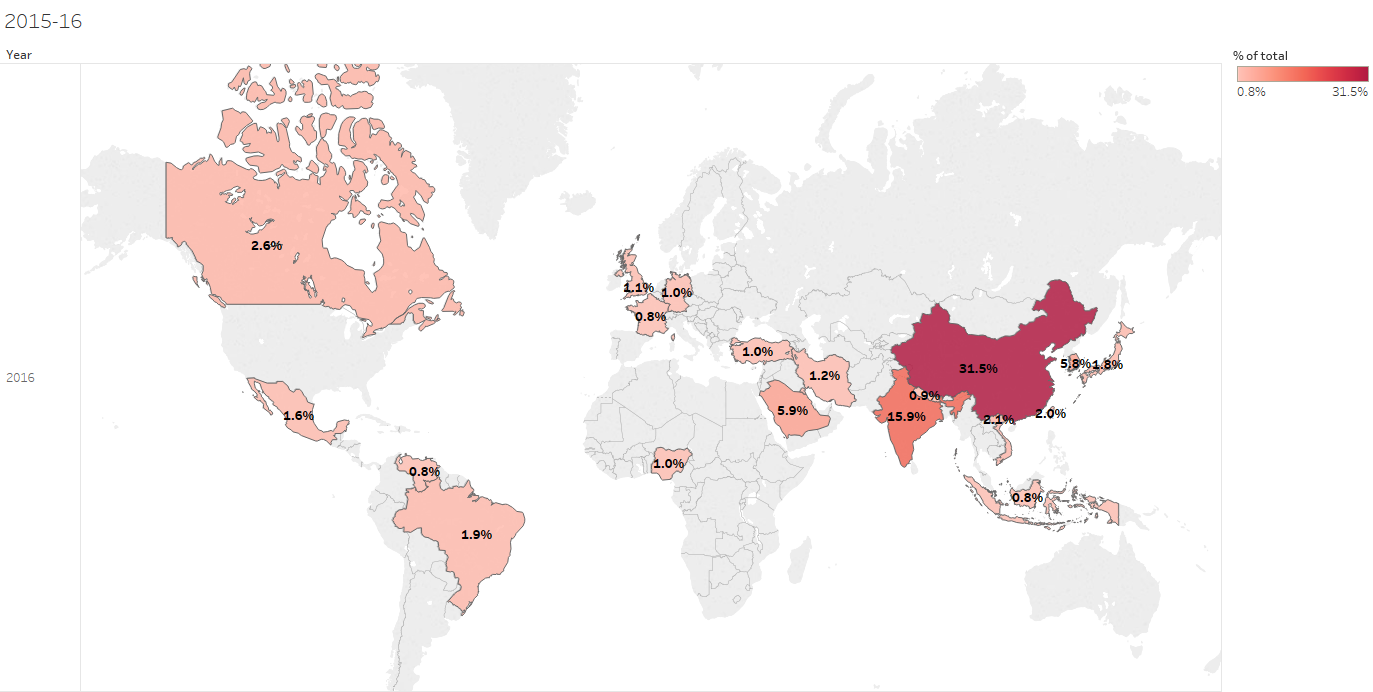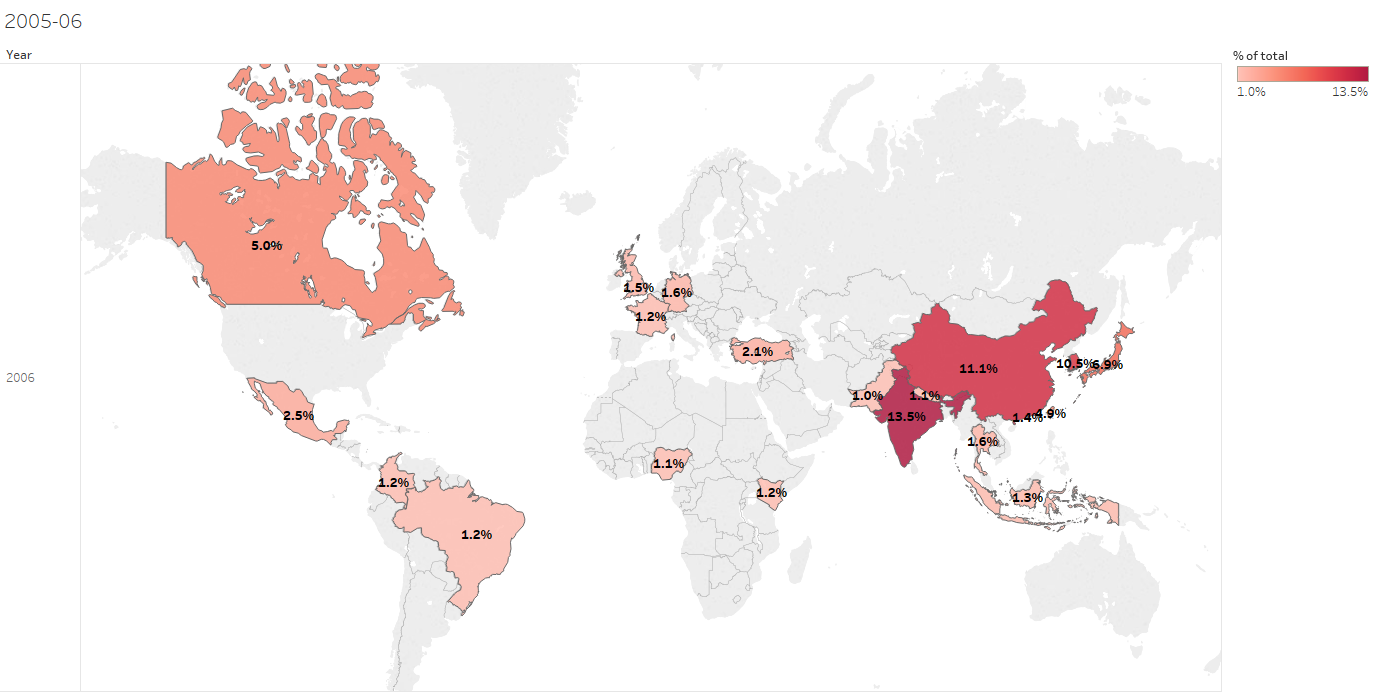The election of Donald Trump as US president, and his attempts to introduce a temporary ban on travellers from some countries, has sparked fears among American universities that they will see a widespread drop-off in demand from international students.
A survey of more than 250 colleges and universities in the country conducted last month has shown that these worries may not be unfounded, with almost 40 per cent of the institutions seeing declines in applications.
Much of the decline in demand seems to have come from the Middle East, the region that has been the focus of Mr Trump’s travel ban. However, universities have also reported drops in applications from China and India.
The maps below show just how important these two nations have become as the source of international students for US colleges and universities in the past decade, now accounting for almost half of all overseas students in the US.
According to the Institute of International Education’s annual Open Doors report on international student mobility, China was the leading source country in 2015-16, with 31.5 per cent of all overseas students in the US. India was second at 15.9 per cent, but still well ahead of the third-leading country, Saudi Arabia (5.9 per cent).
In contrast, the US’ closest neighbours Canada and Mexico accounted for just 4.2 per cent, while both the South American and European countries among the top 20 leading source nations accounted for about the same share, just under 3 per cent each.
Top 20 nations sending students to US, 2015-16 and 2005-06


See interactive versions here
These figures contrast sharply with 2005-06, when India was the leading source country for international students in the US, but with a lower percentage of the total (13.5 per cent). China, meanwhile, was second (11.1 per cent of the total), while South Korea was third (10.5 per cent).
Canada and Mexico (7.5 per cent of the total), leading European nations (4.3 per cent) and leading South American nations (4.4 per cent) were also much more prominent.
Over the period the total number of international students in the US rose 85 per cent from almost 570,000 in 2005-06 to more than 1,000,000 in 2015-16. While Chinese and Indian student numbers in the US have soared over that time (the number of students from China rose 425 per cent), other countries have seen more modest increases and the number of students from Japan (the fourth leading source country in 2005-06) has fallen by half.
Find out more about THE DataPoints
THE DataPoints is designed with the forward-looking and growth-minded institution in view




